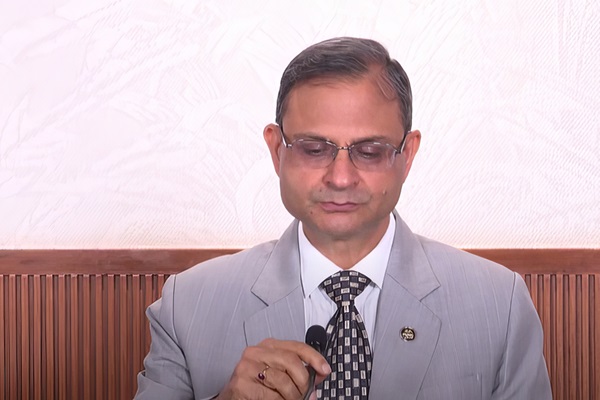.png)
RBI Reopens Rate Door, December Cut Alive
RBI held repo at 5.5%, stance neutral. Malhotra kept powder dry, with inflation benign and growth risks making December a live meeting.

October 1, 2025 at 5:16 AM IST
The Reserve Bank of India left its repo rate unchanged at 5.50% on Wednesday, with Governor Sanjay Malhotra making clear that the pause was tactical, not terminal. Inflation has eased sharply and growth is showing signs of fatigue, but the Monetary Policy Committee judged that another cut at this stage would be premature.
By holding back, Malhotra has kept his powder dry while reopening the door for further easing that had been firmly shut after the June policy.
The stance remains neutral, but the policy signal has shifted.
With headline consumer inflation for 2025-26 now pegged at just 2.6%, revised down across the year despite base effects, the inflation battle looks largely won. Cuts to GST rates and easing food prices have pushed price momentum lower, while core inflation is expected to stay contained. The central bank’s tone reflected confidence that disinflation is entrenched.
The growth–inflation narrative itself has altered since the August meeting, shaped by a fast-changing global environment.
Growth forecasts, meanwhile, were nudged higher but still fell short of aspiration. The RBI raised its GDP growth forecast for 2025-26 to 6.8% from 6.5%, acknowledging resilience from domestic demand, rising capacity use and improving investment sentiment. Above-normal monsoons and strong prospects for both kharif and rabi crops are expected to lift rural incomes.
Yet the RBI admitted external conditions remain unfavourable: tariffs and trade policy are likely to moderate exports, even as GST reforms partly offset these trade-related headwinds.
Quarterly growth projections reflected this tension. GDP is seen expanding 7.0% in July–September, 6.4% in October–December, 6.2% in January–March, and 6.4% in April–June of 2026–27. That trajectory underscores the downside risks that persist despite better domestic drivers.
Malhotra stressed that the effects of earlier front-loaded rate cuts and GST reductions are still filtering through the economy. The prudent course, it appears, is to wait for the July-September GDP data and allow past measures to take hold before acting again.
The RBI has policy space, but the timing matters.
The October decision, therefore, was less about restraint than about sequencing. By pausing now, the central bank has left ample room to support growth later, especially if the downside risks crystallise. In June, the message was that rate cuts were done. Today, the message is that they are back on the table.
Markets are likely to treat December as a live meeting. With inflation collapsing, growth slowing at the margin, and global uncertainties looming large, the calculus points to more accommodation ahead. The RBI’s challenge will be to engineer that shift without spooking markets or diluting its inflation-fighting credentials.
For now, Malhotra has chosen patience. The cut may not have come in October, but the central bank’s signal is unmistakable: the easing cycle is not over, only paused.



